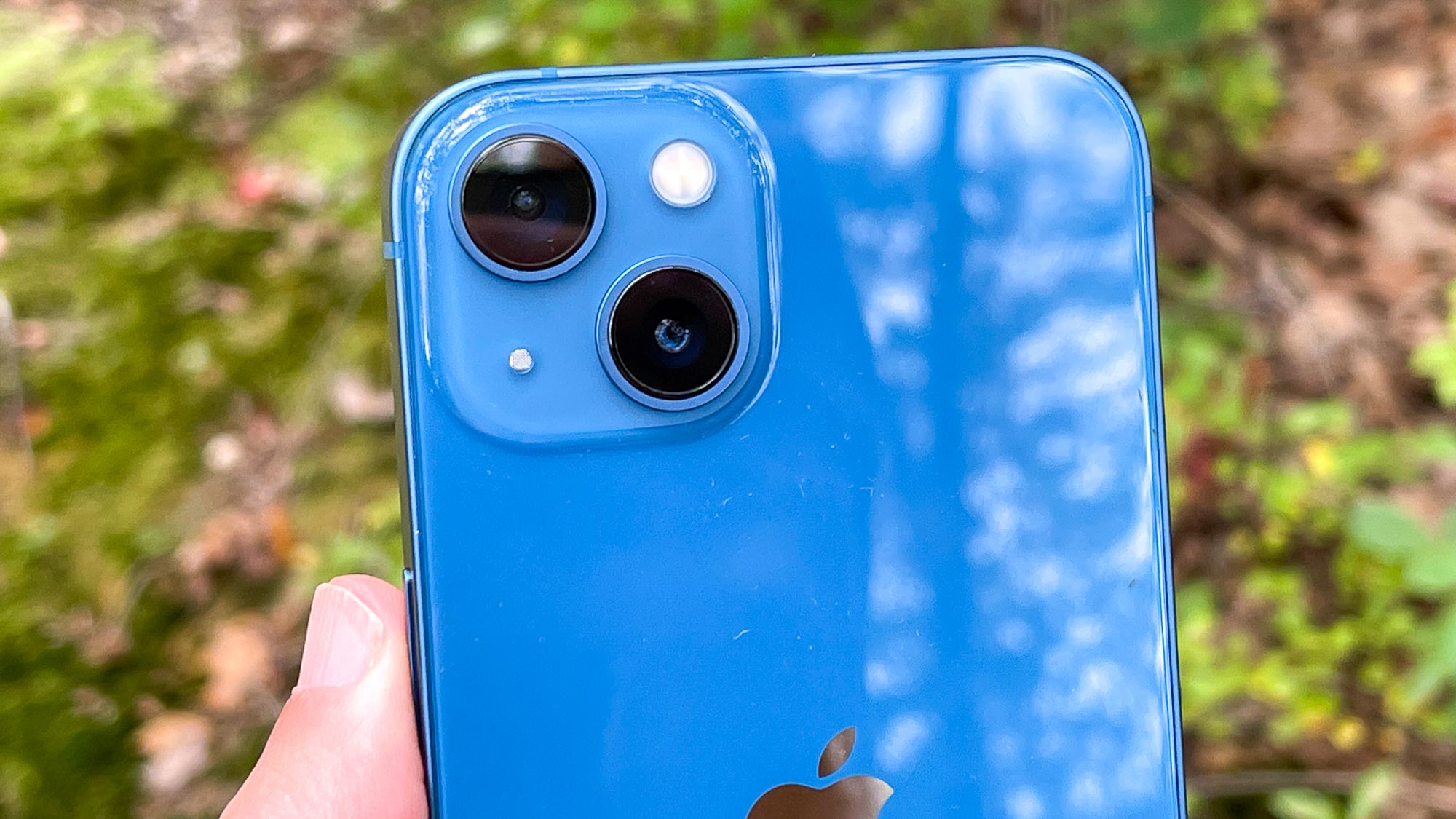iPhone 14 won't be overshadowed by iPhone 14 Pro — here's why
Apple's lower-cost flagships should have their share of compelling upgrades

When the iPhone 14 arrives later this year, the iPhone 14 Pro figures to get the most attention. In fact, at this stage in the rumor cycle, so many features are being tipped for the iPhone 14 Pro and iPhone 14 Pro Max, it's tempting to overlook the standard iPhone 14 models.
After all, it's the Pro, not the regular iPhone 14, that's reportedly getting an upgraded 48MP main camera. The iPhone 14 Pro models will continue to offer a telephoto lens, something that's unlikely to appear on the iPhone 14. There are even rumors of the iPhone 14 Pro getting a 2TB storage option or even a USB-C port — features that are all but certain to pass by the iPhone 14.
It's certainly understandable that the marquee improvements are going to be featured in Apple's Pro phones. The word "Pro" in the product's name is probably the tip-off that it's going to feature the best of the best. But that doesn't necessarily mean the iPhone 14 is being neglected or that it won't be an eye-catching updating in its own right.
Yes, the iPhone 14 Pro sounds like it's going to be a big deal at this point in the rumor cycle. But big changes are afoot for the the other iPhone 14 models, too. Here's why the iPhone 14 should excite you.
The iPhone 14 will feature a new Apple chipset
Because Apple introduces a new chipset each year when it rolls out new phones, we run the risk of overlooking just how important an upgrade this can be. Ho hum, another chip upgrade. I bet this one's even faster than before.
Well, yes. The A16 Bionic that will likely power the iPhone 14 models in the fall — standard and Pro editions alike — is a good bet to be faster than the A15 you'll find in the iPhone 13 lineup. And that means Apple is all but certain to continue its edge over other mobile silicon when it comes to performance, since the A15 is already the fastest chipset we've tested for mobile devices.

But there's going to be more to the A16 Bionic than just a speed bump. Analysts are tipping the A16 to be based on a 4-nanometer process, compared to the 5nm A14 and A15 chips powering the last two iPhone generations. The smaller the process, the more powerful the chip and the less space it takes up inside the phone. That frees up Apple to increase battery size or make other design changes with an eye toward performance.
Get instant access to breaking news, the hottest reviews, great deals and helpful tips.
What's more, the system-on-chip inside of phones involves more than just a CPU and GPU. Phone makers are increasingly relying on those chips to power more AI-driven functions — see Google's Tensor silicon in the Pixel 6 series for examples of what that entails — and we'd imagine that Apple is going to find ways to make the A16 Bionic even smarter than before. That will translate to iPhone 14 features we can only begin to speculate about.
The iPhone 14's getting a new look
Mark Gurman of Bloomberg has stated that the iPhone 14 is getting a "complete redesign." There's some speculation that means a sleeker look for the phone, with the rear lenses more integrated into the phone's body. It's looking increasingly likely that the notch is disappearing from all iPhone 14 models — at one point, rumors suggested only the Pro versions would lose the notch — with a pill-shaped camera cutout potentially taking the notch's place. (Or a pill-shaped cutout plus a circular hole as well — look, we didn't say all these rumors were good ones.)

The point is, the iPhone 14 is likely to look very different from the iPhone 12 and iPhone 13. That could make this year's iPhone a more compelling buy, particularly if you've been holding on to your current model for a while.
The iPhone 14 will have a larger screen option
It's not good news if you like compact phones as much as I do, but the mini model that's been around since the iPhone 12 mini likely won't return for the iPhone 14. Instead, Apple's reportedly going to complement its entry-level 6.1-inch iPhone with a new 6.7-inch model. For now, that version is being called the iPhone 14 Max.
That's great news for people who like big phones, which is the majority of the smartphone-buying world these days. Before, if you wanted the biggest possible screen on an iPhone, you had to pay top dollar for the top-of-the-line handset like the iPhone 13 Pro Max. You'd get one of the best phones available, sure, but you'd have to pay dearly for the privilege. Now, it seems as if Apple's going to have a lower-cost big screen option, giving customers more choice.
iPhone 14 camera improvements
Most of the rumors about iPhone 14 camera changes have focused on the Pro models, which adds to the impression that maybe the standard iPhone 14 won't be that big of a deal when it shows up this fall. I think that's the wrong conclusion to draw, though, and not just because more camera rumors are likely to emerge between now and the fall.

Even in years where the cameras on the Pro models see the bigger improvements, Apple doesn't neglect its lower-cost iPhones. Take the iPhone 13, which saw the size of its main camera increase. That allowed the iPhone 13 to let in 47% more light on shots than iPhone 12's main camera did. Apple also increased the amount of data the iPhone 13's ultrawide lens could capture, and the Cinematic Mode feature that allows for shifting focus in video works just as well on the iPhone 13 and it does on the iPhone 13 Pro.
The takeaway here: The iPhone 14 Pro may be getting more headline-grabbing changes, such as a 48MP main lens, according to current rumors. But Apple's not going to release a standard iPhone 14 without adding any improvements whatsoever. It's worth finding out just Apple has planned for the iPhone 14 cameras before making any sweeping pronouncements on whether this is a worthwhile upgrade or not.
120Hz displays remain a possibility for the iPhone 14
The iPhone 13 Pro and iPhone 13 Pro Max were the first Apple handset to feature fast-refreshing displays, with the Pro Motion screens able to dynamically adjust refresh rates depending on your on-screen activity. The regular iPhone and iPhone 13 mini got shut out of that feature, raising hopes that Apple might add it for their iPhone 14 successors.
The rumors have gone back and forth on this front — some rumors claim that all iPhone 14 models will have Pro Motion displays, others suggest only the iPhone 14 Max will gain this feature and still more contend that fast-refreshing displays will remain a Pro-only capability. We tend to think that the iPhone 14 and iPhone 14 Max will join the Pro models in offering fast-refreshing displays, as too many iPhone competitors already offer that feature. And it would certainly make the iPhone 14 a more compelling upgrade.
The iPhone 14's price is like to stay the same
There's a bright side even if the iPhone 14 Pro gets more new features than the standard iPhone — the Pro is more likely to get a price bump. Indeed, that's what the latest rumor claims, with the iPhone 14 Pro and iPhone 14 Pro Max tipped to cost $100 more than their iPhone 13 equivalents.
In contrast, it sounds as if Apple's holding the line on prices for its entry-level models. In fact, should Apple keep the $699 entry-level price for its phones, that could actually lower the cost of the 6.1-inch iPhone. Currently, the iPhone 13 costs $799, but the iPhone 14 would likely take the iPhone 13 mini's $699 price should the iPhone 14 Max join Apple's lineup.
High-end features are always going to attract shoppers who want their phones to sport all the latest bells and whistles. But those $699 and $799 prices Apple has set on its entry-level iPhone flagships are the ones most people are willing to pay. So no price increase there would certainly be welcome news.
iPhone 14 outlook
The fact of the matter is, we're still waiting for more iPhone 14 details to emerge that give us a fuller picture of what Apple has planned for the fall. Plenty of more leaks will drop between now and then, particularly on the camera front. And that could cause us to re-examine just how exciting an update the iPhone 14 figures to be.
At the end of the day, though, whatever Apple releases will still be a new iPhone. And for most smartphone users, that's reason enough to stay interested.
Philip Michaels is a Managing Editor at Tom's Guide. He's been covering personal technology since 1999 and was in the building when Steve Jobs showed off the iPhone for the first time. He's been evaluating smartphones since that first iPhone debuted in 2007, and he's been following phone carriers and smartphone plans since 2015. He has strong opinions about Apple, the Oakland Athletics, old movies and proper butchery techniques. Follow him at @PhilipMichaels.

